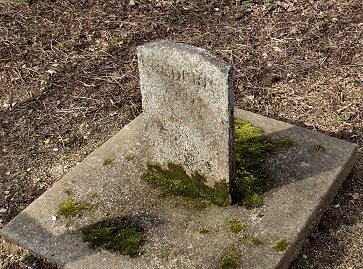 cles in England. His racing stables were situated at
Michelgrove about three miles to the north of Angmering village. Such was his
stature on the turf, that the Gratwicke Stakes and the New Ham Maiden Fillies'
Stakes are still run in his memory at Goodwood.
cles in England. His racing stables were situated at
Michelgrove about three miles to the north of Angmering village. Such was his
stature on the turf, that the Gratwicke Stakes and the New Ham Maiden Fillies'
Stakes are still run in his memory at Goodwood.Most racehorse owners aspire to winning the Derby once during their lifetimes but Gratwicke was fortunate to have won it on two occasions. The first was in 1829 when it was won for him by his horse Frederick. His second success was in 1845 with his two-year old, The Merry Monarch.
Frederick, ridden and trained by Mr John Forth, was a rank outsider for the Derby at 40/1 but won for Gratwicke £2650 in prize money, which equates to about £110,000 in today's values. John Forth was alleged to be 60 years of age when he rode Frederick, and still holds the record for being the oldest jockey of a Derby winner. Frederick was buried on Gratwicke's estate under the trees in his paddock close to what is now the 18th green of Ham Manor Golf Course. The headstone (see below) reads "Frederic 1837". It is not known why the "k" was left off the end of the name.
In 1845,
 The Merry Monarch won at 15/1, the jockey being Foster
Bell. John Forth was again the trainer and it is concluded he was based at the
Michelgrove stables. A photo of a painting of The Merry Monarch is displayed in
the clubhouse of Ham Manor Golf Club. Forth was also the trainer of the 1840
Derby winner, Little Wonder, believed to be stabled at Michelgrove, who was
owned by David Robertson. Little Wonder was another rank outsider, winning at
odds of 50/1.
The Merry Monarch won at 15/1, the jockey being Foster
Bell. John Forth was again the trainer and it is concluded he was based at the
Michelgrove stables. A photo of a painting of The Merry Monarch is displayed in
the clubhouse of Ham Manor Golf Club. Forth was also the trainer of the 1840
Derby winner, Little Wonder, believed to be stabled at Michelgrove, who was
owned by David Robertson. Little Wonder was another rank outsider, winning at
odds of 50/1.The Merry Monarch's success may well have been attributed to the manner in which the horse found its way to Epsom. The Squire invented what is now the forerunner of the horsebox - a large box on wheels, made locally, and drawn by two cart-horses. The journey took about three days but the jockey travelled with the horse and exercised him each evening in a suitable field. Prior to this time, horses were either walked to the race meeting or took an uncomfortable journey by train. Gratwicke's horsebox also embraced a communications system with the stables - carrier pigeons! They brought messages notifying the stables of the journey's progress and early news of the winning of the race.
St Margaret's Church in Angmering was in poor condition at the time and legend has it that Squire Gratwicke promised the Rector that he would finance the rebuilding of the church from the winnings if his horse won the Derby. Whether the story is true, we will now never know. The fact is, however, that Squire Gratwicke did indeed provide money for the church rebuilding plus the rebuilding of Older's School opposite, and the Vestry Hall and lychgate - the work being undertaken by the architect S S Teulon and completed in 1853.
Apart from the Derby, Gratwicke had other successes on the turf. For instance, his horses Cheerful, Hesse Hamburg and Earl won the Newmarket Handicap on three occasions in 1850, 1851 and 1856 respectively. Additionally, his horse, Governess, ridden by Tom Ashmall, won the Oaks at 4/1 in 1858.